
I grew up eating karaage, Japan’s beloved fried chicken. It’s a timeless dish found everywhere—from home kitchens and bento lunch boxes to street stalls and family diners. My mom often made it when we had guests over, and I’ve been chasing that memory ever since—trying to recreate her version with perfectly crisp skin and tender, juicy meat. It’s the kind of dish you’ll want to enjoy wholeheartedly and without hesitation.
If you’re craving more fried chicken, try my Fried Chicken Wings, Nagoya Style Fried Chicken, or Chicken Nanban next!

What is Karaage?
Karaage (唐揚げ) is a Japanese cooking method where we coat meat or veggies in flour before deep-frying. While technically anything can be prepared in this style, the term is primarily associated with Japanese fried chicken. Karaage is a staple appetizer in Japanese gastropubs (izakaya) and ramen shops and a main dish in bento box lunches and Japanese home-cooked meals.
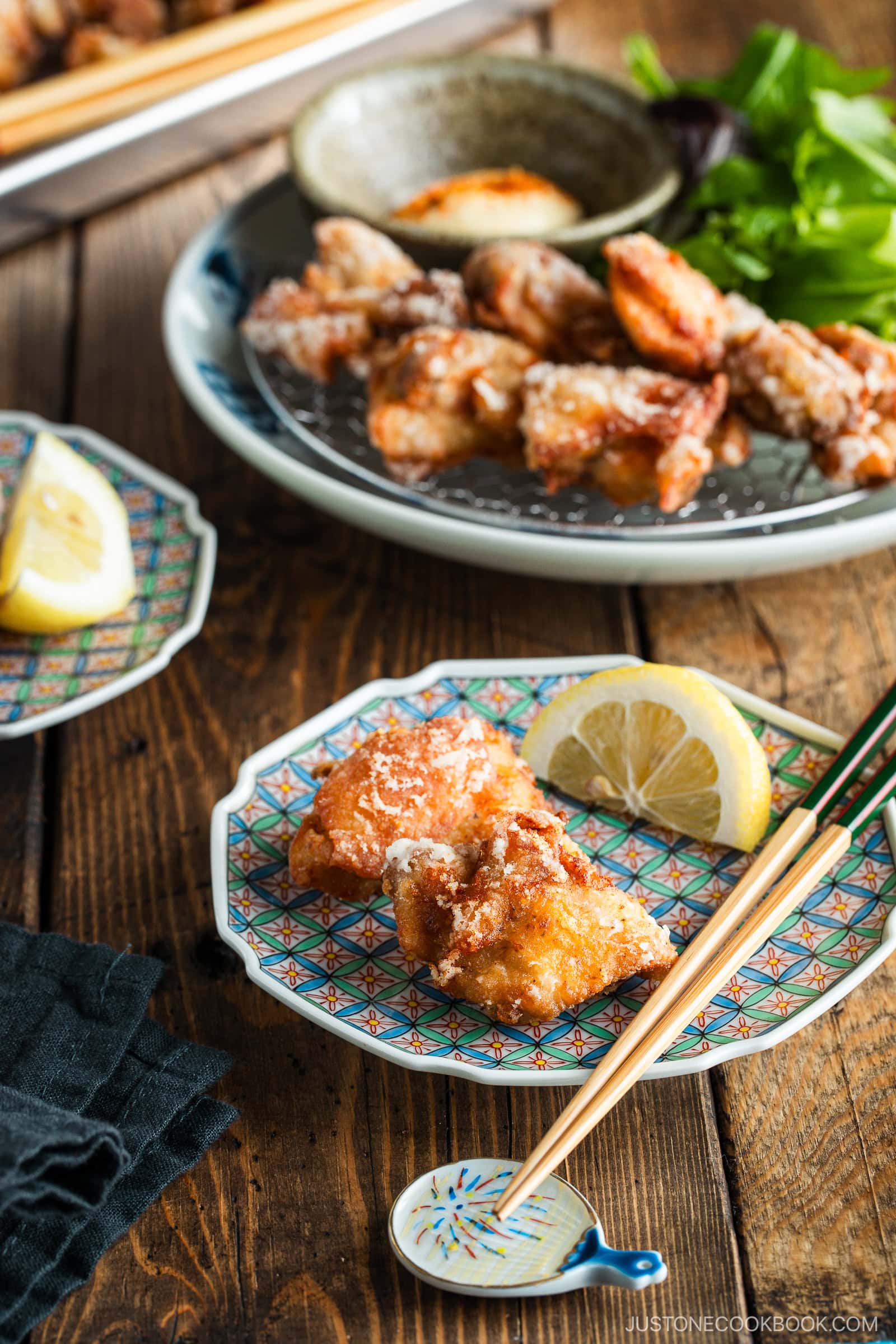
Ingredients for Karaage
- Chicken thighs – boneless and skin-on
- Kosher salt and black pepper
- Ginger
- Garlic
- Soy sauce
- Sake
- Toasted sesame oil
- Neutral oil – read my post on the Best Neutral Oil for Cooking
- Potato starch – or cornstarch
- All-purpose flour
- Lemon wedges, Japanese Kewpie mayonnaise, and shichimi togarashi (Japanese seven spice) – optional toppings and garnishes
Find the printable recipe with measurements below.
Jump to RecipeSubstitutions
- Chicken thighs: I’ve found that boneless, skin-on chicken thighs deliver the best results—the skin turns beautifully crispy while keeping the meat tender and juicy. That said, skinless thighs work too, if you prefer. If your chicken thighs come bone-in, you can ask your butcher to remove the bones or do it yourself at home with a sharp knife.
- Sake: If you can’t find this, I recommend using dry sherry or Chinese rice wine instead, or skip it.
- Potato starch: You could also use rice flour or corn starch instead. I have not tested this dish with tapioca starch, but please let me know how it turns out if you try it.
- All-purpose flour: For gluten-free, substitute with one of the starches instead.

How to Make Karaage
Preparation
Step 1 – Prepare the chicken. Slice the chicken thighs into 2-inch pieces and season with salt and pepper. Place it in a large bowl.

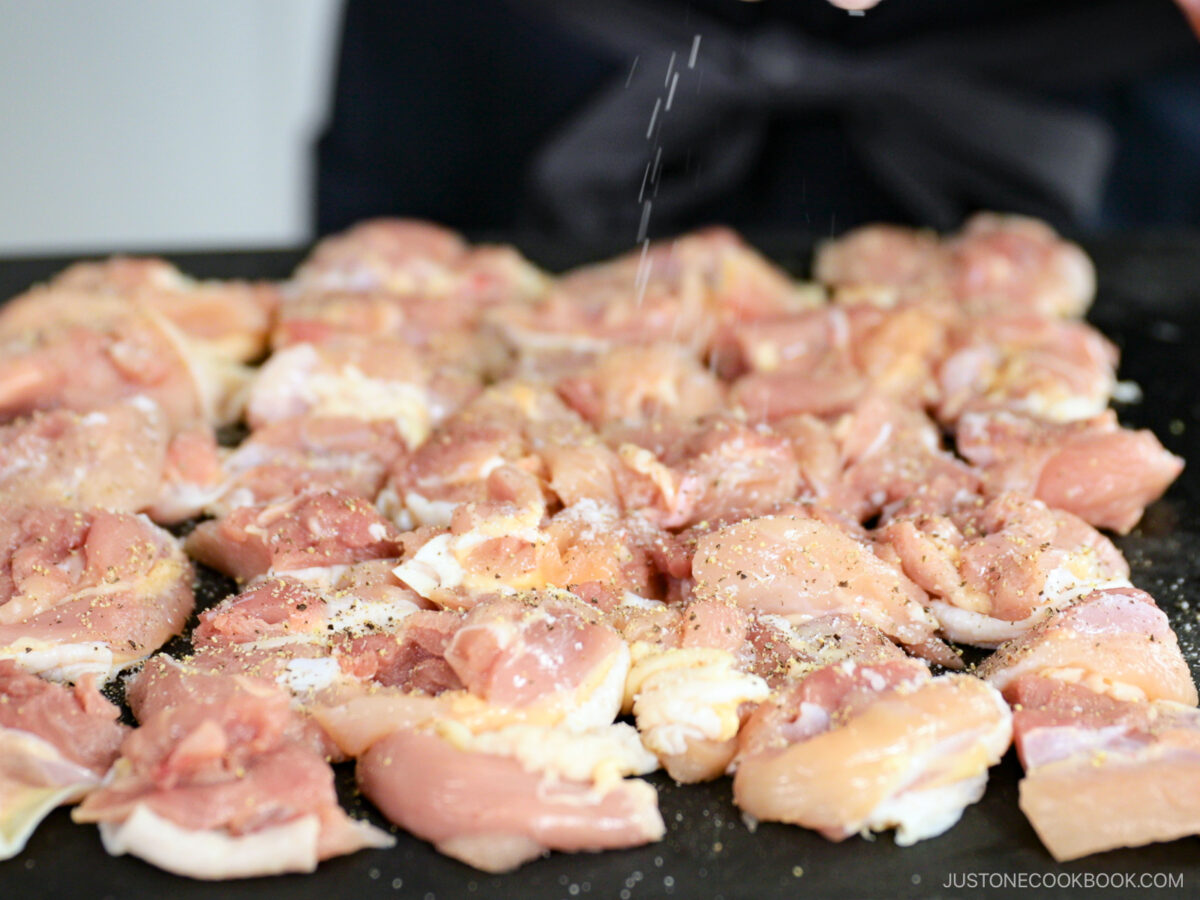
Step 2 – Marinate. Add the grated ginger, garlic, soy sauce, sake, and sesame oil to the bowl. Toss to coat, cover the bowl, and marinate in the fridge for 30 minutes.
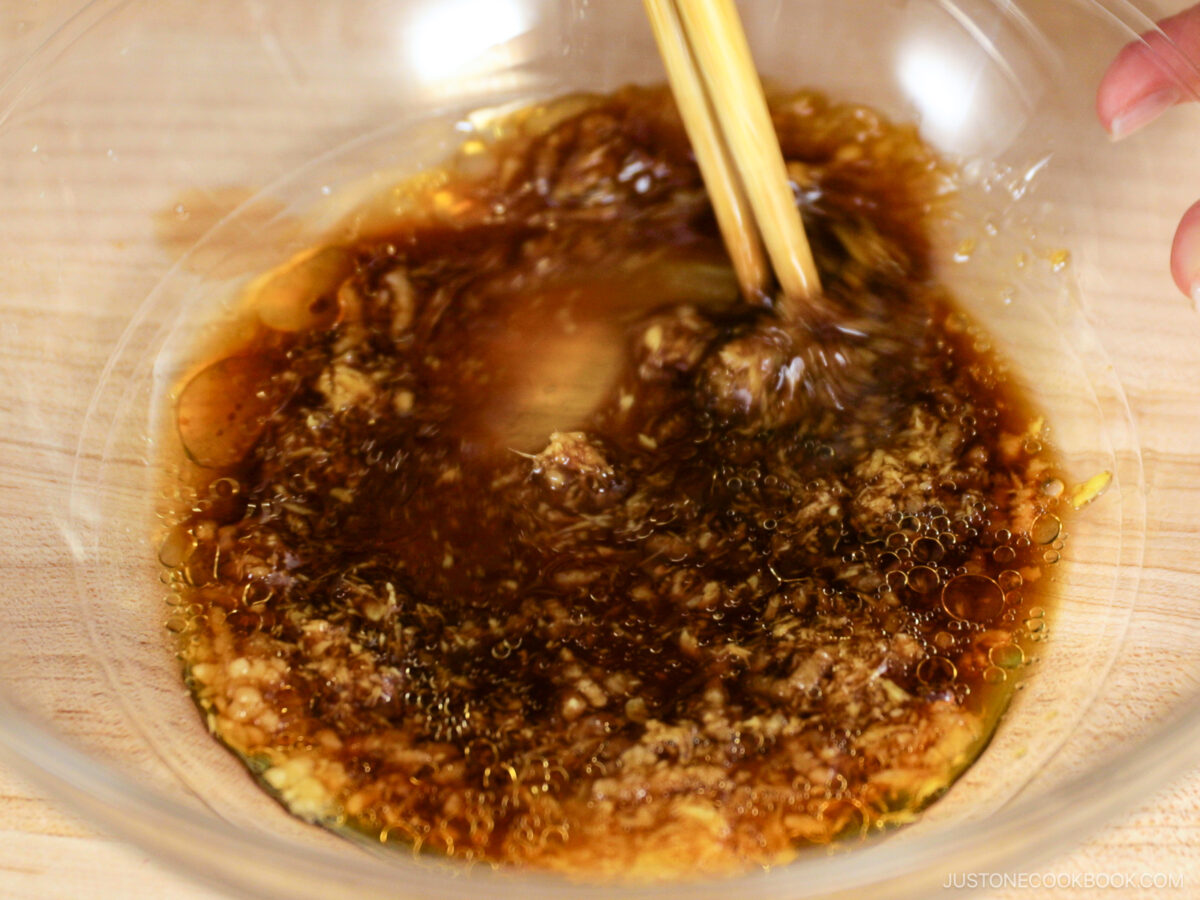
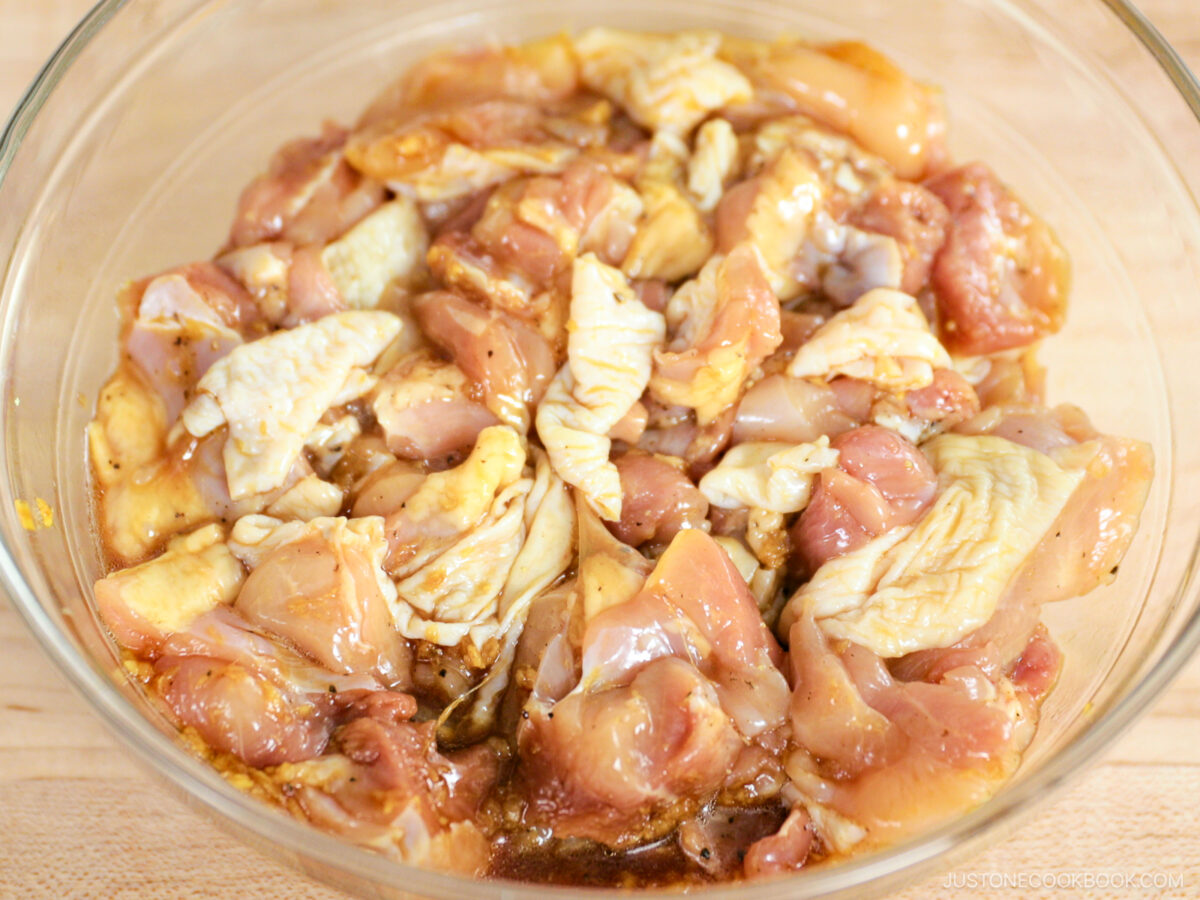
Step 3 – Heat the oil. Add oil to a deep pot over medium heat and preheat to 325ºF (160ºC).
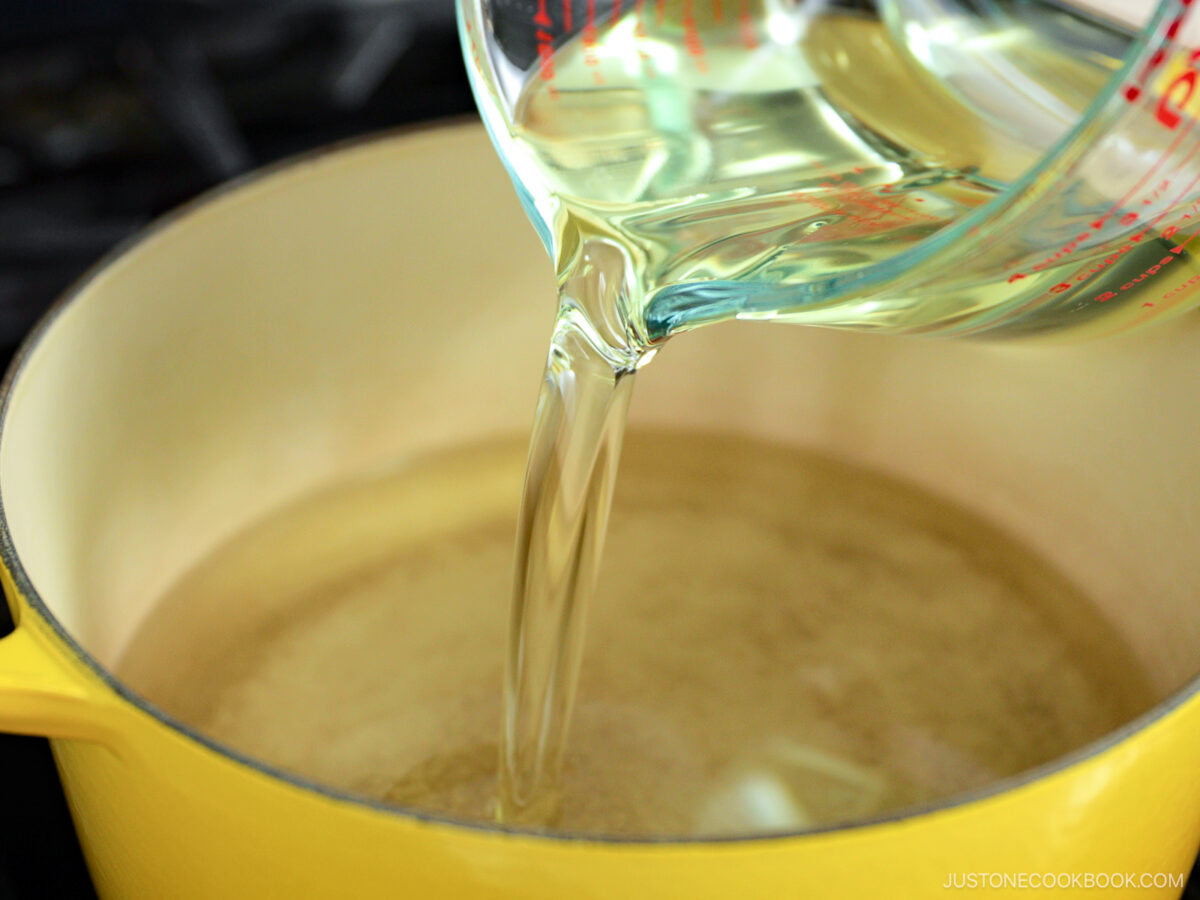
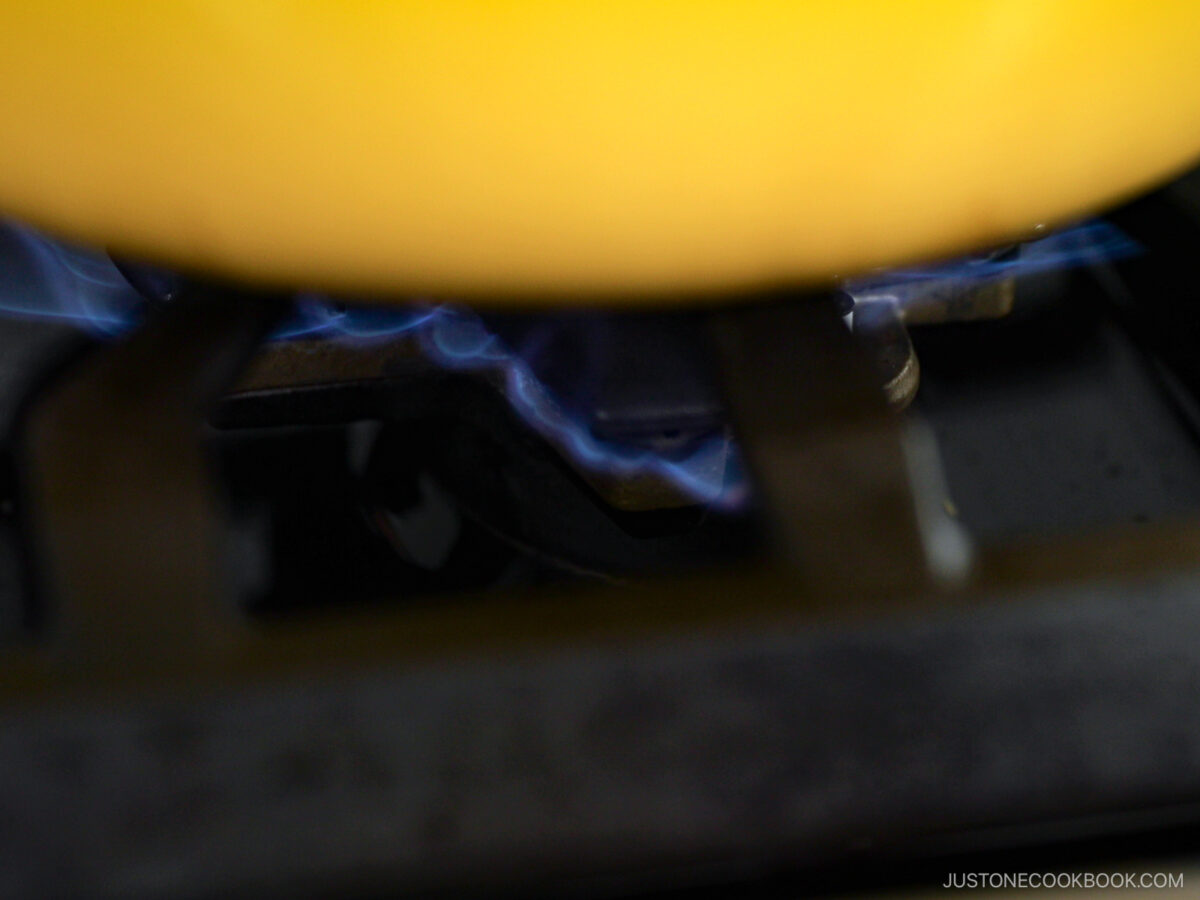
Step 4 – Dredge the chicken. Place the flour and starch in separate piles on the shallow plate. Dredge the chicken in the flour, then the starch. Repeat with the remaining pieces.
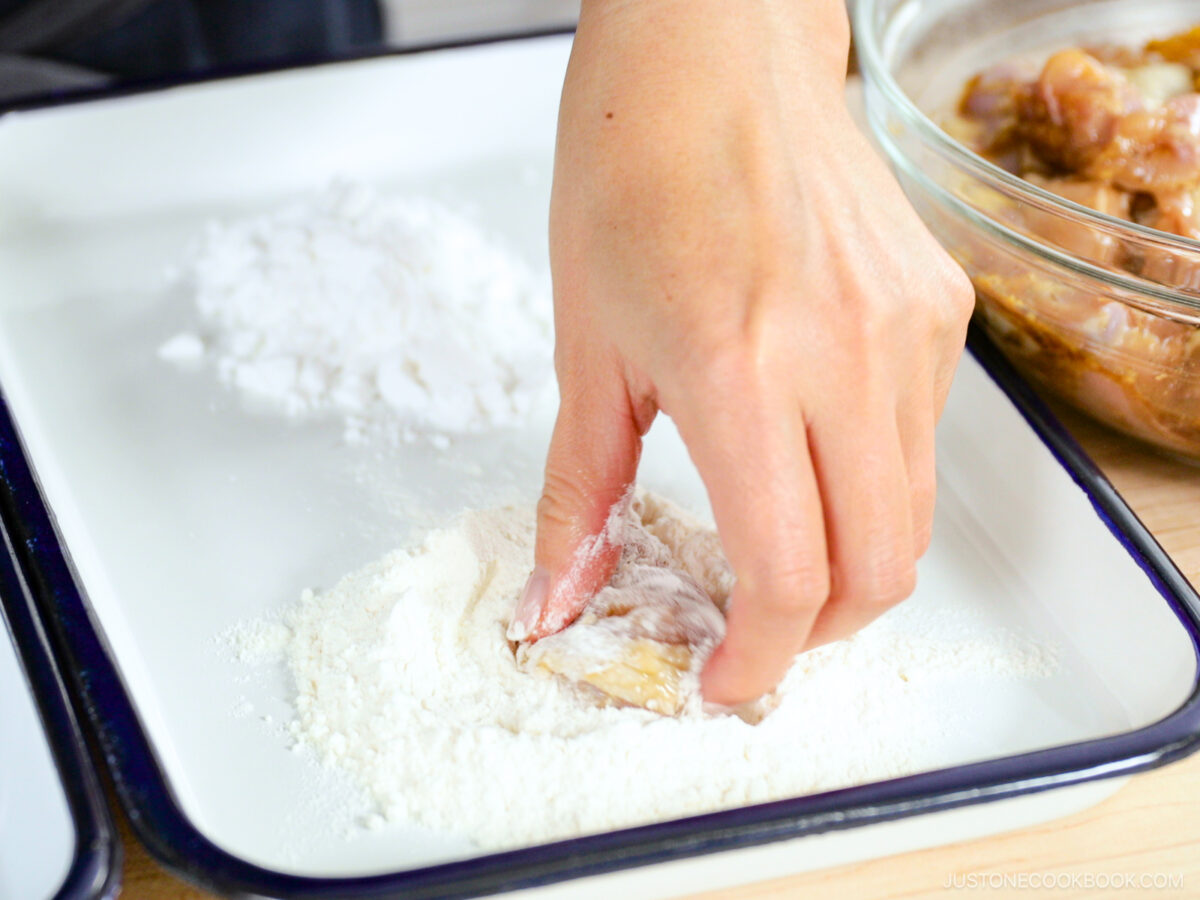
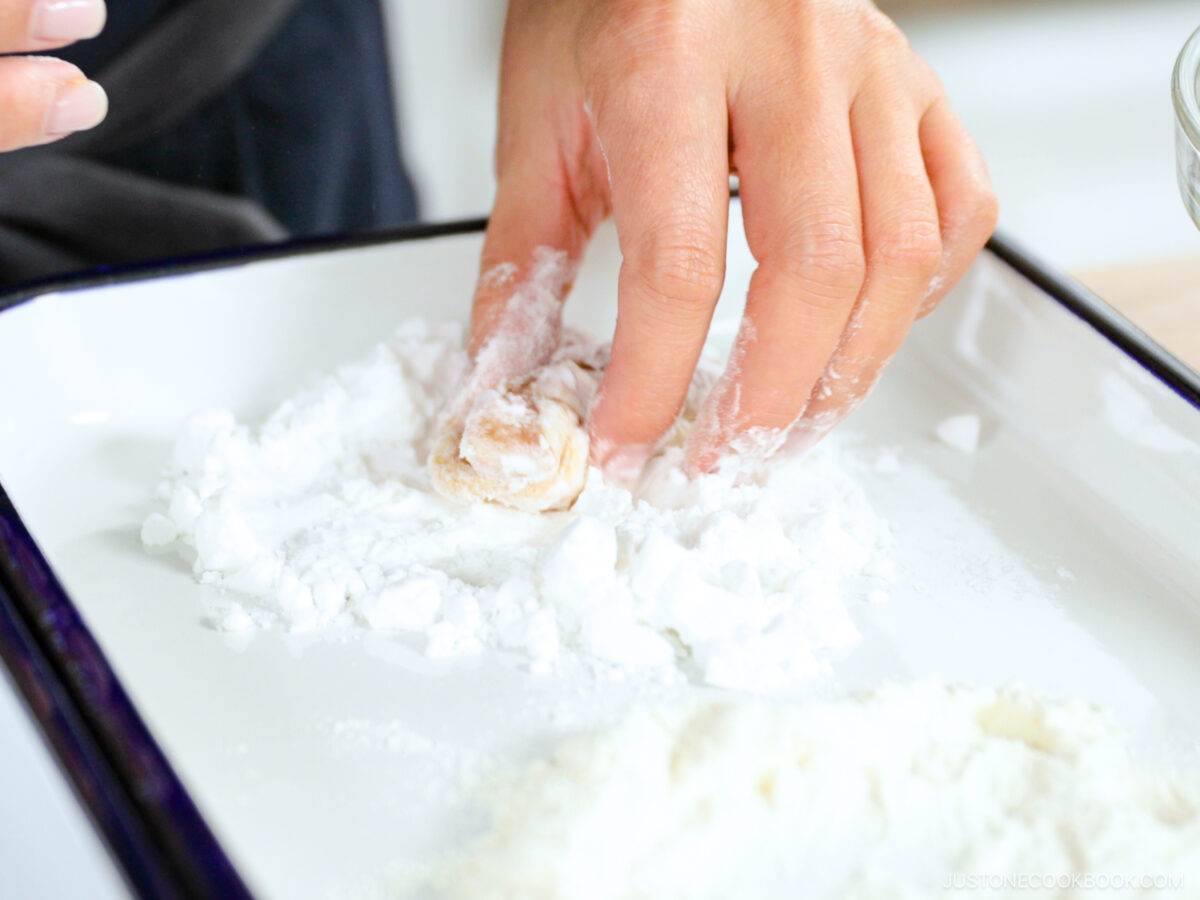
Cooking
Step 5 – Fry in batches. Submerge several chicken pieces in the hot oil and fry for 90 seconds. Transfer the chicken to a wire rack to drain the excess oil. Repeat with all the chicken.
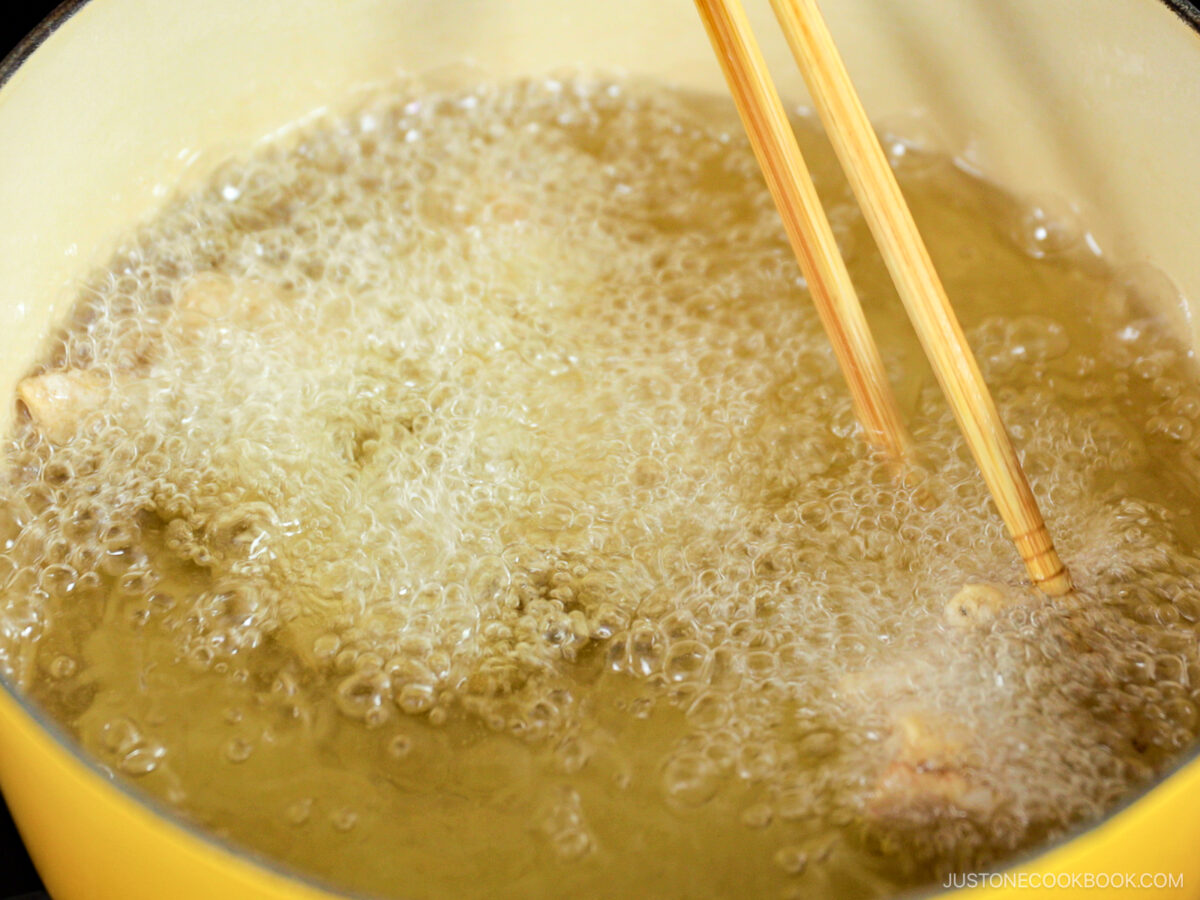
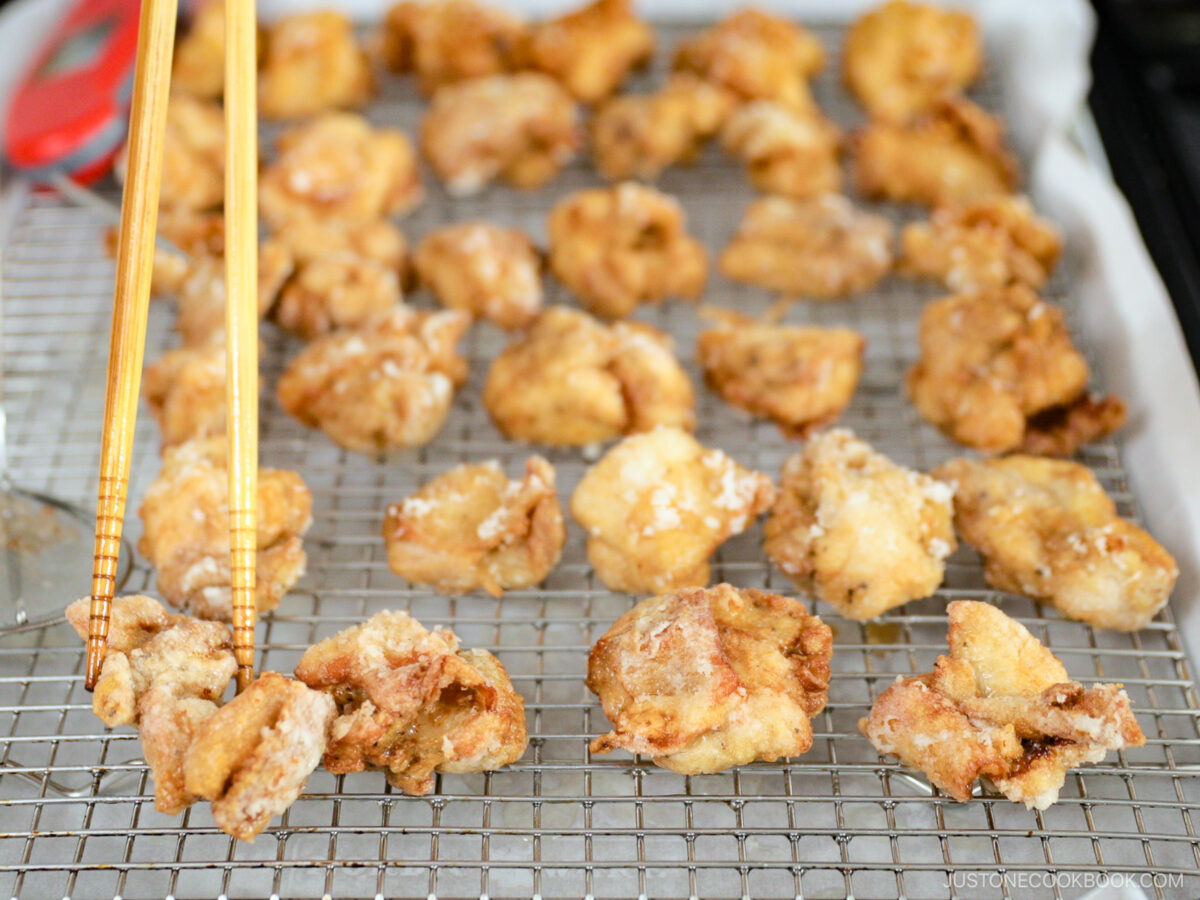
Step 6 – Fry a second time. Raise the oil temperature to 350ºF (180ºC) and fry the chicken again for 45 seconds, then return to the wire rack, and repeat with all of the pieces.
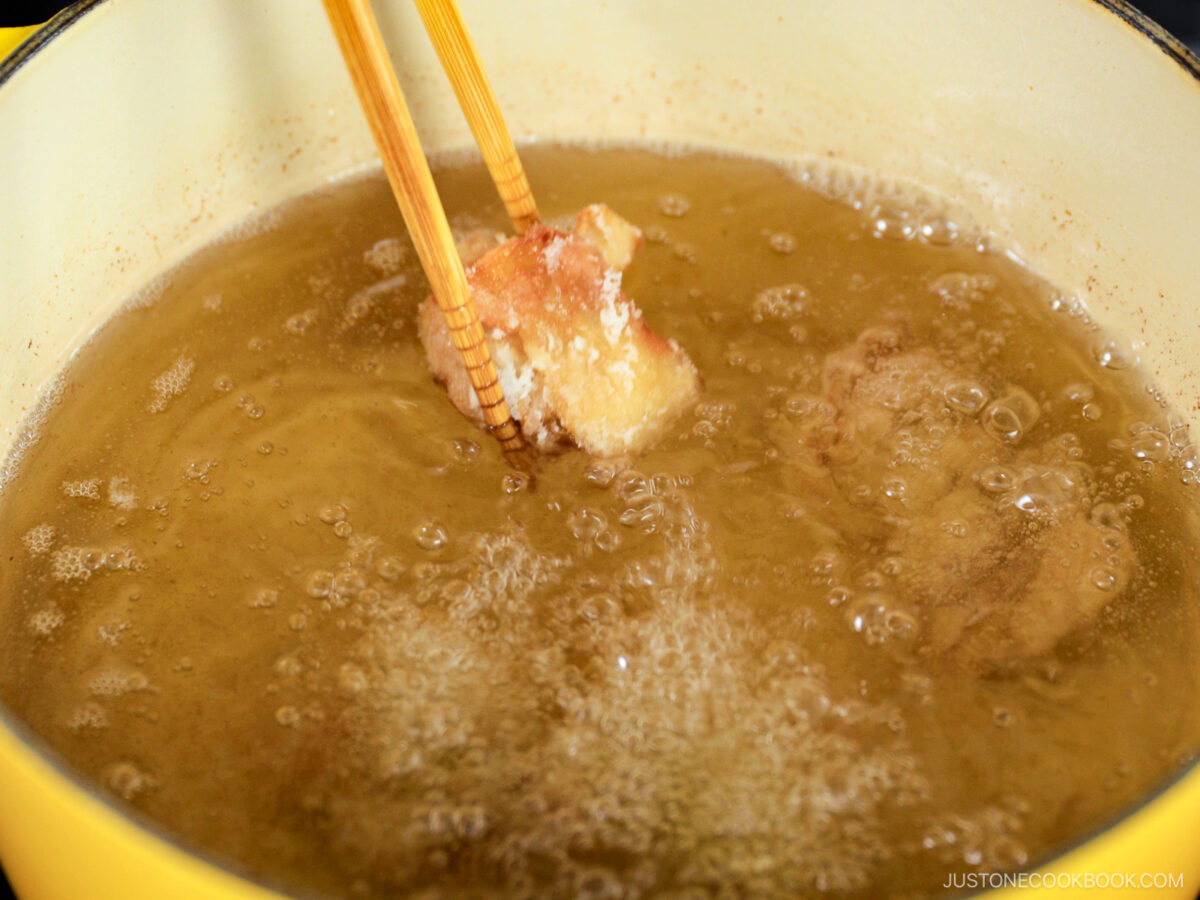
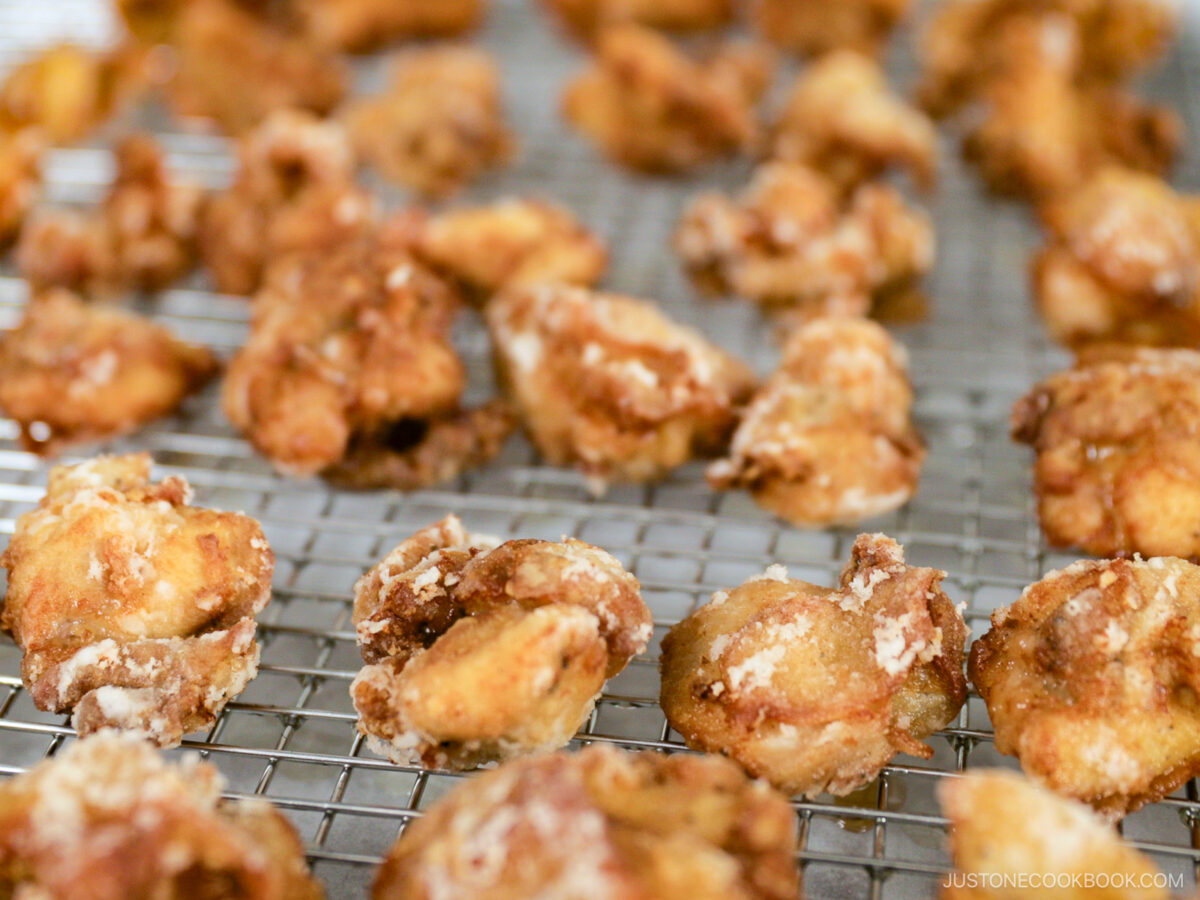
Assemble
Step 7 – Serve. Serve the fried chicken warm with optional lemon wedges, Japanese Kewpie mayo, and a sprinkle of shichimi togarashi.
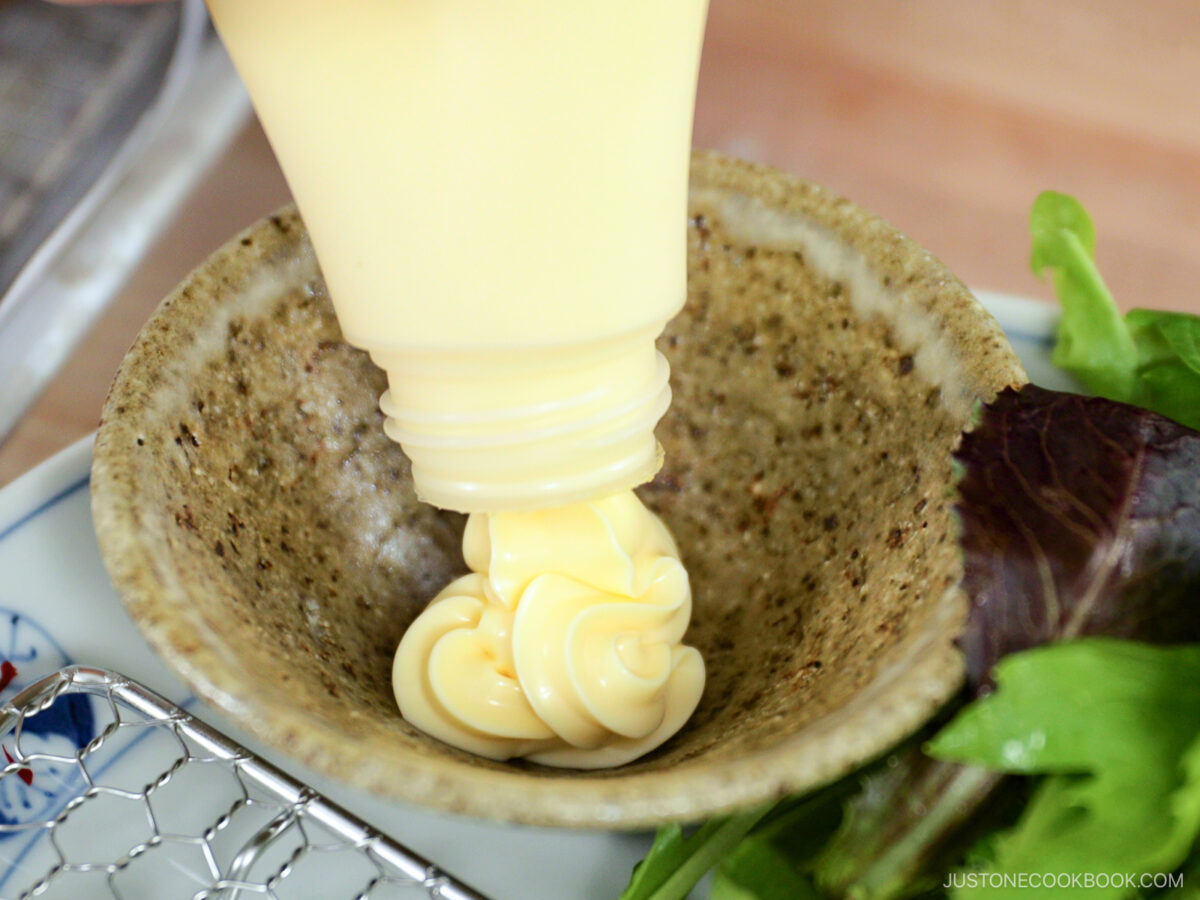
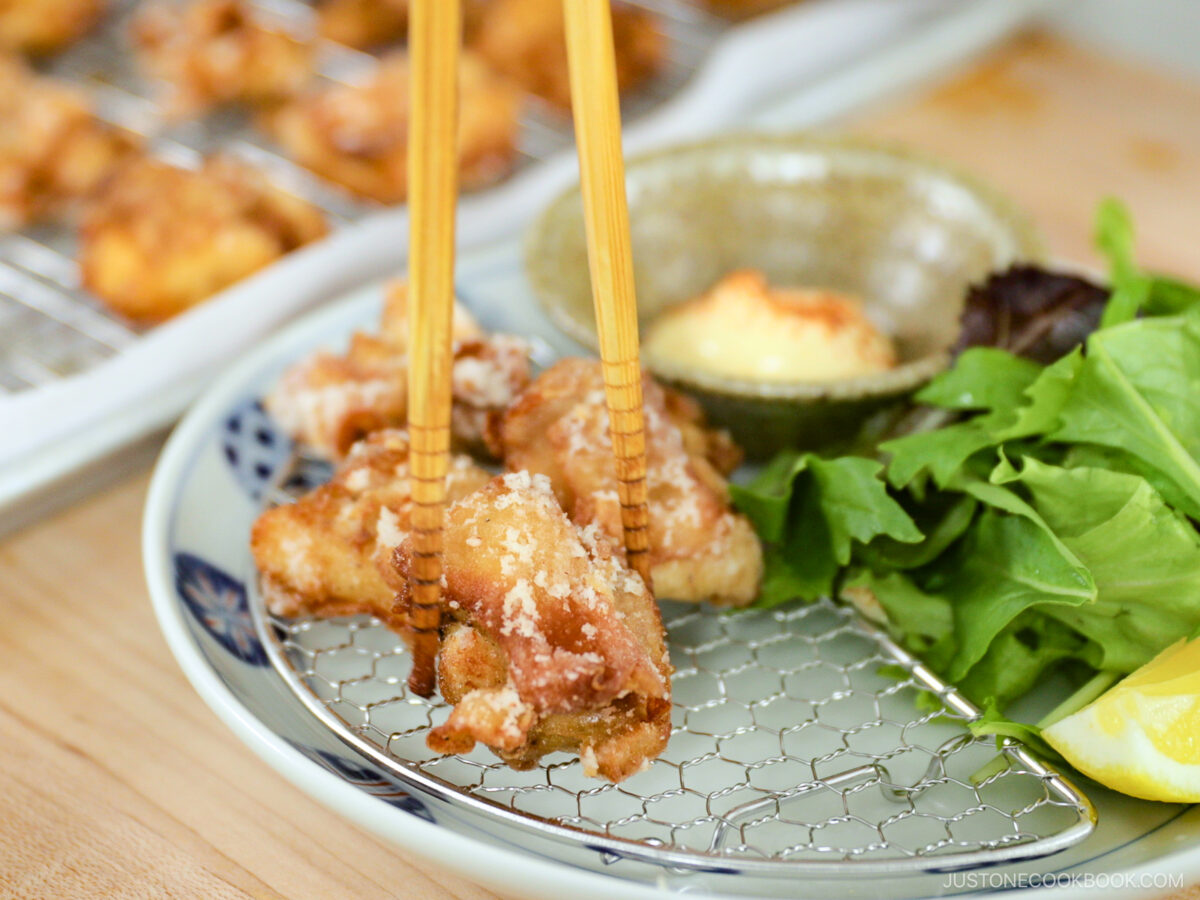
Nami’s Recipe Tips
- Cut the chicken into evenly sized pieces – This helps ensure that all the pieces cook at the same rate. When the chicken is uniform in size, you avoid undercooking some pieces while overcooking others.
- Don’t marinate too long – I’ve found that 30 minutes is ideal for the chicken to soak in the flavors.
- Lightly coat in flour – Before frying, I suggest lightly shaking the chicken to remove the excess flour, which could make the oil cloudy and compromise the chicken’s texture.
- Don’t crowd the pot – There should only be 3–5 pieces of chicken in the pot at one time. Any more and the oil temperature will drop, causing the chicken to absorb too much oil. For more helpful tips, see my post How to Deep-Fry Food at Home.
Variations and Customizations
Like many versions of fried chicken, my recipe has a lot of room to modify and adjust to your preferences. Here are some of my suggestions.
- Use other cuts of chicken. Although they are less flavorful and juicy, chicken breasts would work in this recipe. Remember that chicken breasts cook more quickly than thighs, so reduce the frying time by 15–20 seconds.
- Make it gluten-free. Try my Gluten-Free Karaage recipe, which is just as delicious.

What to Serve with Karaage
- With vegetable sides – Green Beans with Yuzu Vinaigrette always make for a bright and vibrant side.
- With a salad – A refreshing Tomato Salad with Sesame Ponzu balances the rich fried texture of the chicken.
- With more appetizers – I recommend Gyoza for an additional shareable dish.
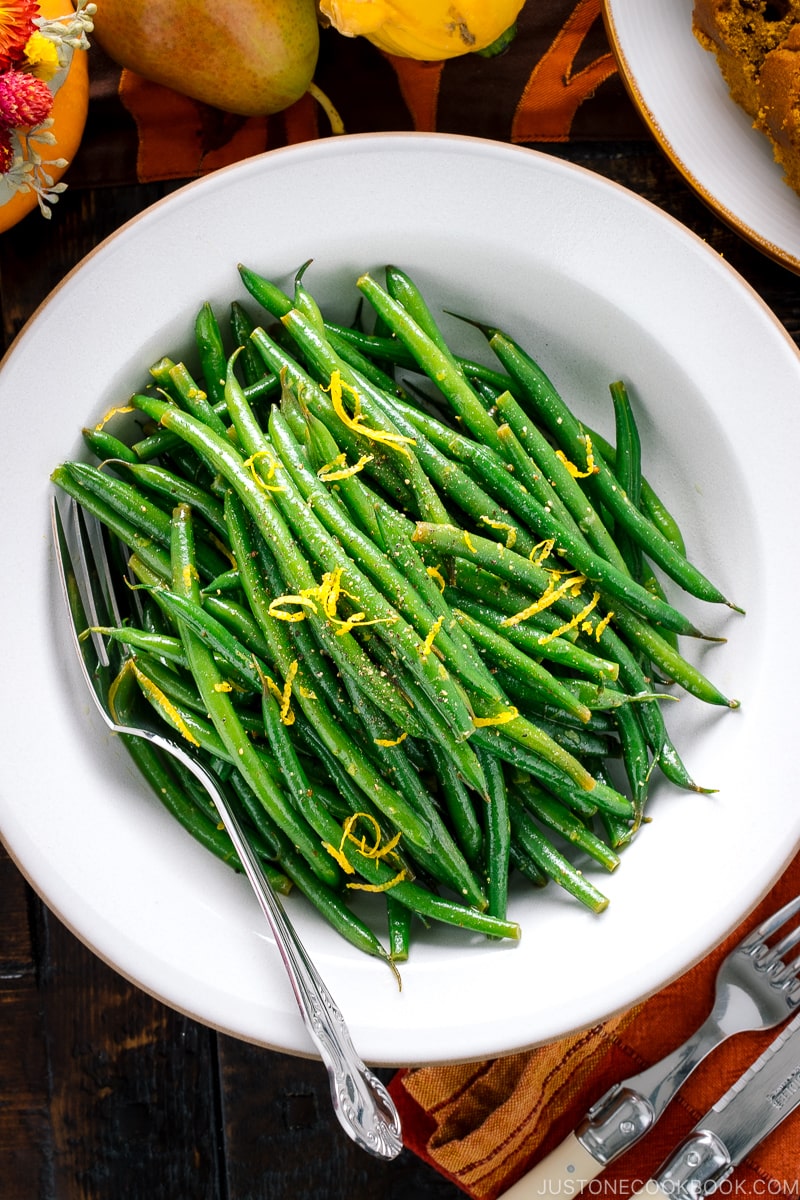
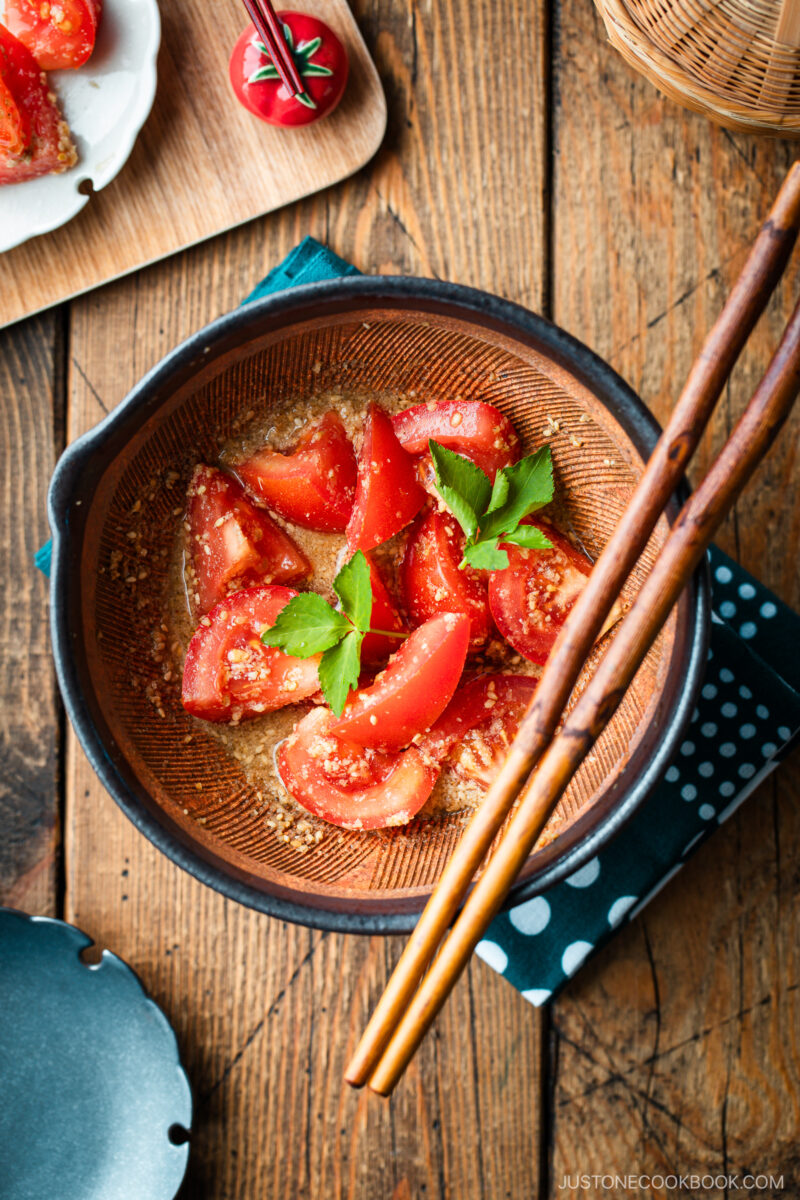
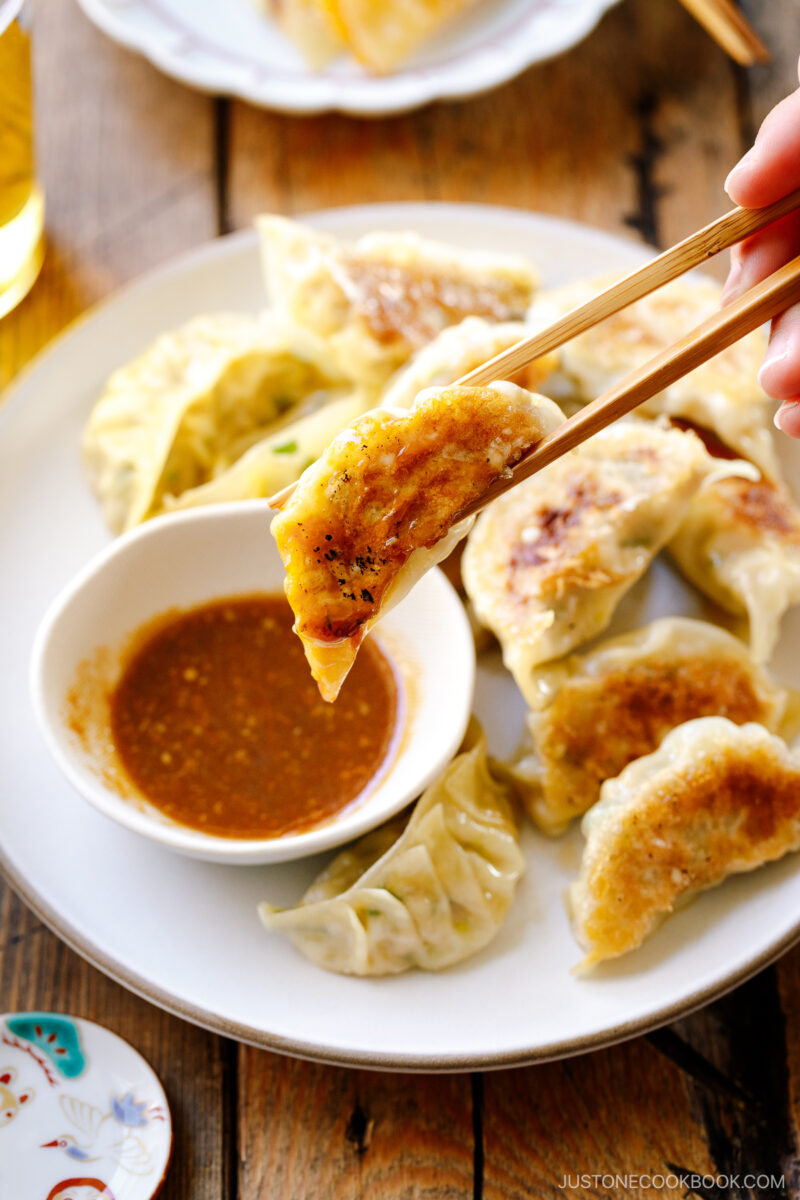
Storage and Reheating Tips
To store: Allow the chicken to cool completely, then refrigerate it in an airtight container for 3–4 days or freeze it for up to 3–4 months.
To reheat: Reheat leftovers in the oven at 350°F (180ºC) for 7–8 minutes or until warm and crispy throughout.
Frequently Asked Questions
Katsu refers to deep-fried cutlets and commonly uses panko-breaded chicken breast, while karaage uses bite-size chicken thighs that are coated in starch. We serve katsu with a sweet-savory brown sauce called tonkatsu sauce. For karaage, we usually serve it with Japanese mayonnaise and a squeeze of lemon juice.
While both karaage and tatsuta-age are beloved Japanese fried chicken dishes, they differ slightly in preparation and presentation. Karaage is typically marinated in a mixture of soy sauce, sake, garlic, and ginger, then coated in either flour, potato starch, or a mix of both before frying. This gives it a golden, rustic appearance with bold, savory flavors. In contrast, tatsuta-age uses a simpler marinade—usually just soy sauce and mirin—which results in a slightly sweeter taste. It’s coated only in potato starch, giving it a lighter, crispier texture and a pale, almost powdery finish once fried.
Karaage (Japanese Fried Chicken)
Ingredients
- 1½ lb boneless, skin-on chicken thighs (4–6 pieces; read the blog post for details)
- ½ tsp Diamond Crystal kosher salt
- ⅛ tsp freshly ground black pepper
For the Marinade
- ½ tsp ginger (grated, with juice)
- 1 clove garlic
- ½–1 Tbsp soy sauce
- ½ Tbsp sake (or substitute dry sherry, Chinese rice wine, or skip it)
- ½ tsp toasted sesame oil
For Deep-Frying
- 3–4 cups neutral oil
- 2 Tbsp potato starch or cornstarch (plus more, if needed)
- 2 Tbsp all-purpose flour (plain flour) (plus more, if needed)
For Serving (optional)
Instructions
- Before You Start…Please note that this recipe requires 30 minutes of marinating time. Gather all the ingredients.
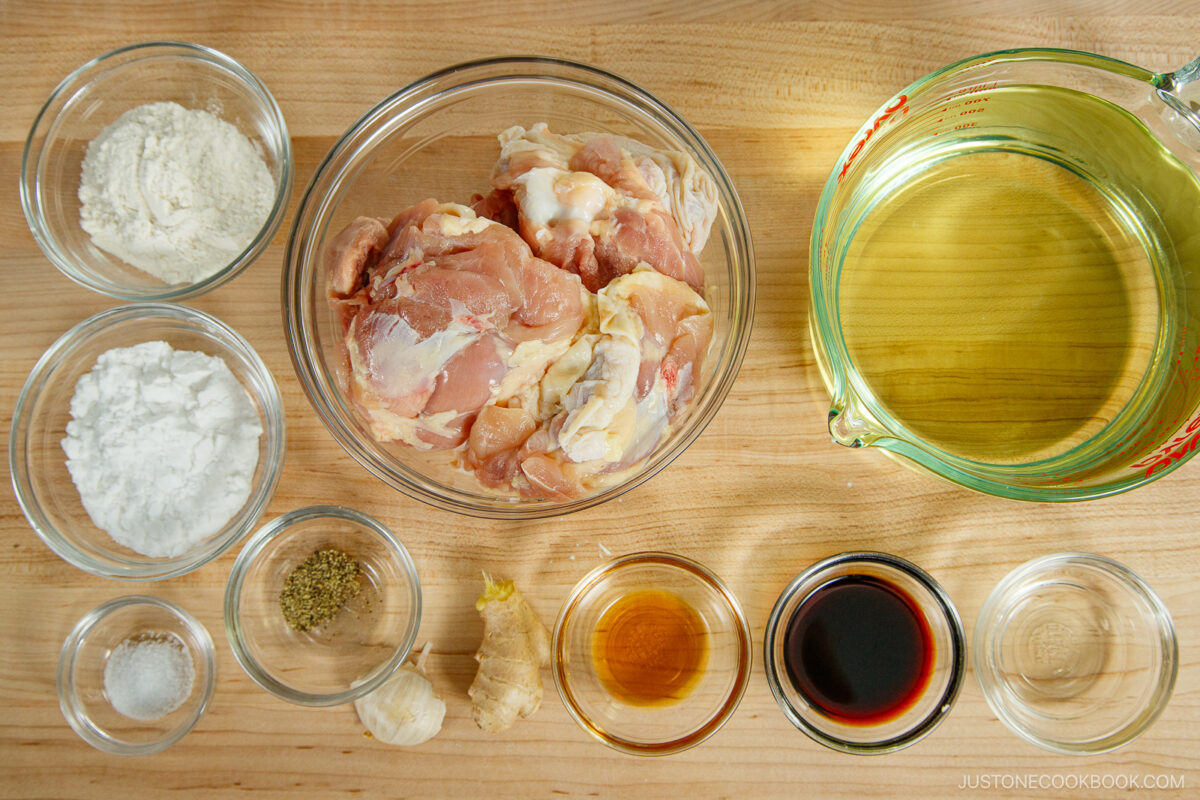
To Marinate the Chicken
- Prepare 1½ lb boneless, skin-on chicken thighs by cutting each into 2-inch (5-cm) pieces. Season with ½ tsp Diamond Crystal kosher salt and ⅛ tsp freshly ground black pepper.
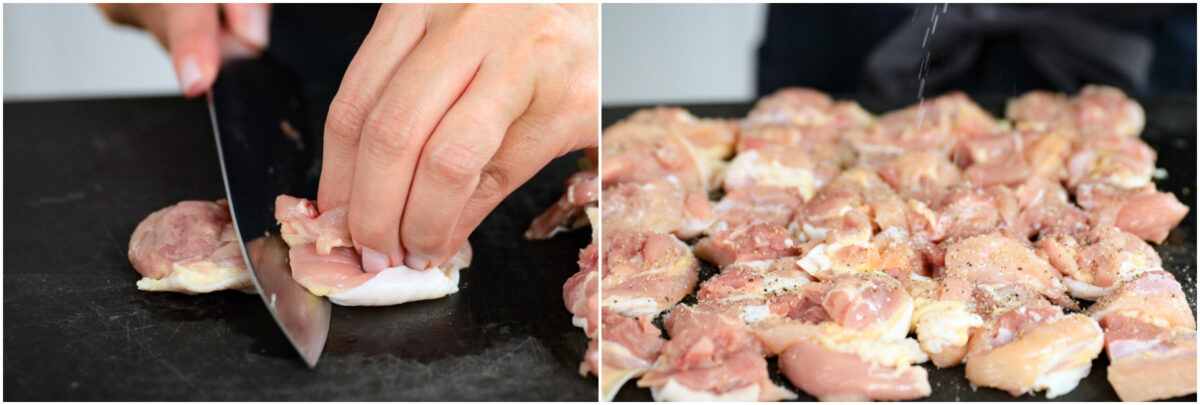
- Now, grate the ginger (I use a ceramic grater) and measure ½ tsp ginger (grated, with juice). Add it to a large bowl. Mince or press 1 clove garlic (I use a garlic press) and add it to the bowl.
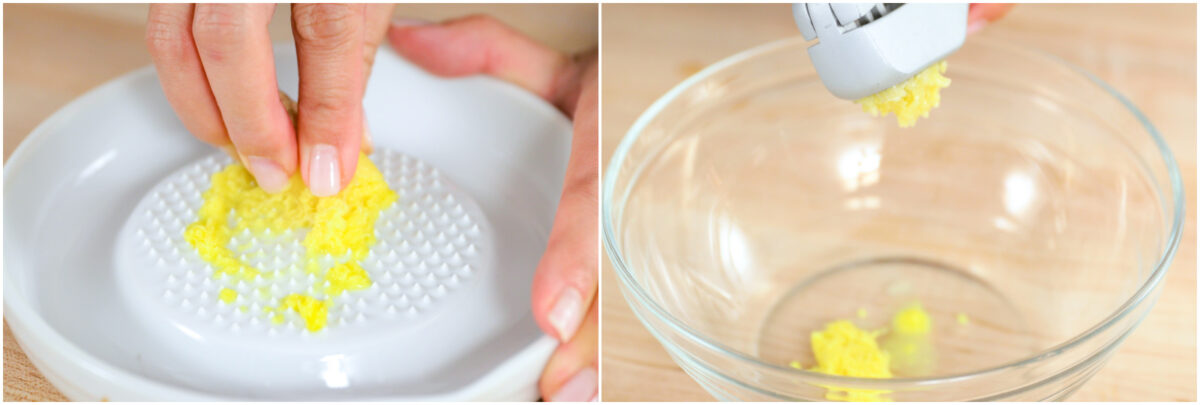
- Add ½–1 Tbsp soy sauce, ½ Tbsp sake, and ½ tsp toasted sesame oil to the ginger and garlic. Whisk to combine.
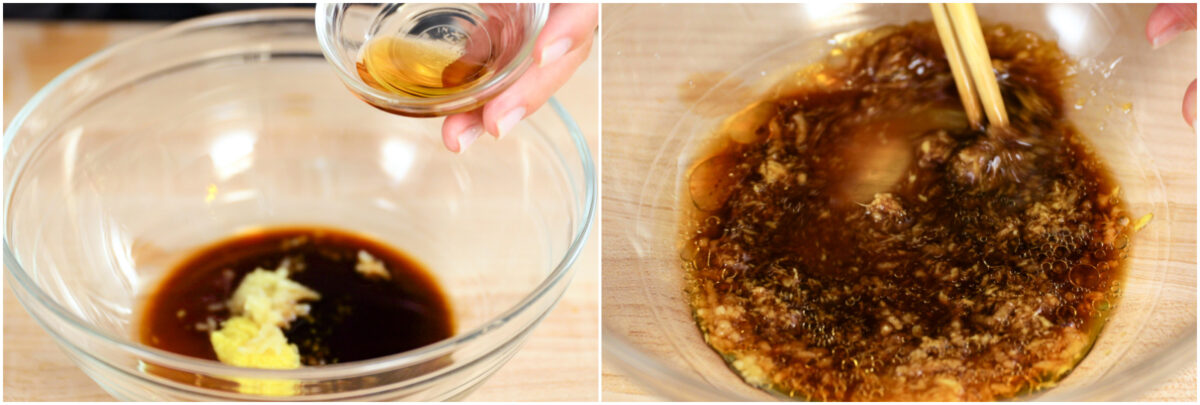
- Add the chicken to the marinade and mix it with your hands. Cover and marinate in the refrigerator for 30 minutes.
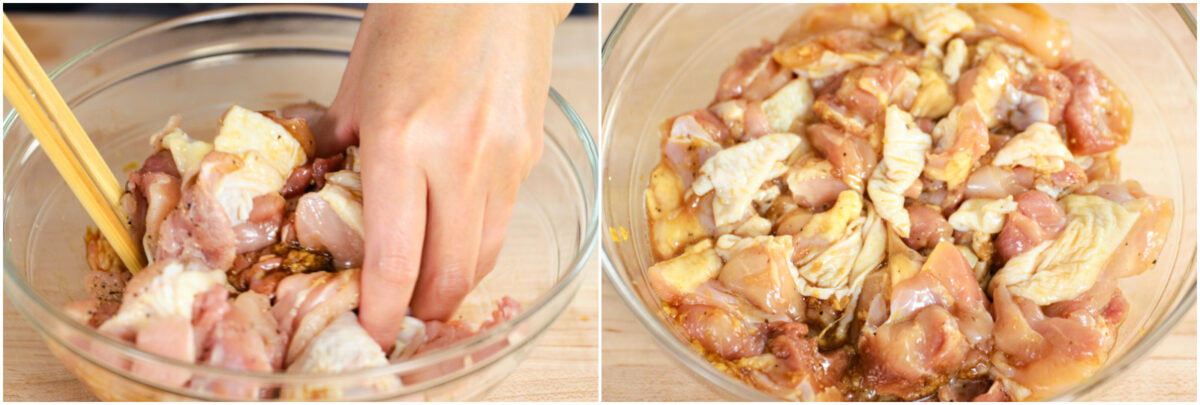
To Preheat the Oil
- While the chicken is marinating, prepare the oil for deep-frying. Pour about 3–4 cups neutral oil into a heavy-bottomed pot (I like using the 2.75-QT Staub), until you have at least 1 to 1½ inches (2.5 to 3.8 cm) of oil. Heat it to 325ºF (160ºC) over medium-low heat so you have enough time to prep the chicken.
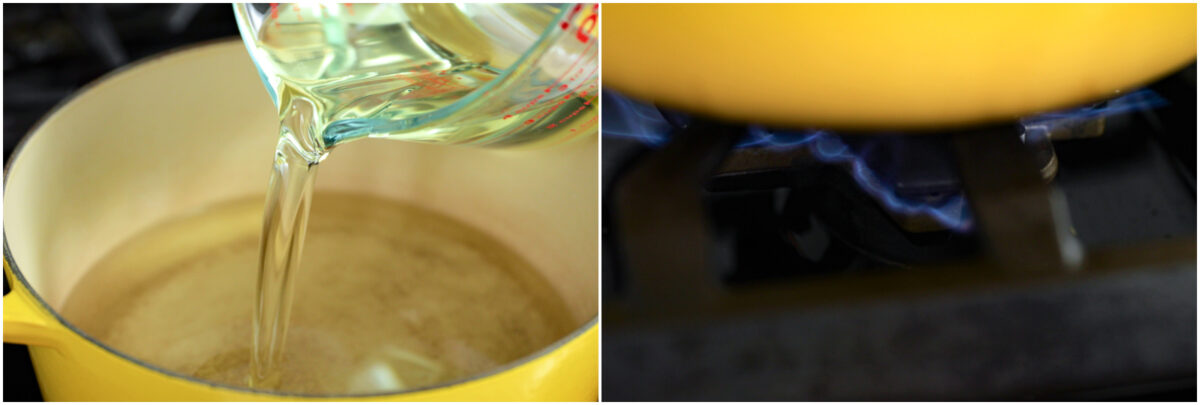
To Coat the Chicken
- Meanwhile, dredge the chicken pieces. Prepare separate piles of 2 Tbsp all-purpose flour (plain flour) and 2 Tbsp potato starch or cornstarch in a tray. Lightly coat a piece of marinated chicken in the flour and dust off the excess.
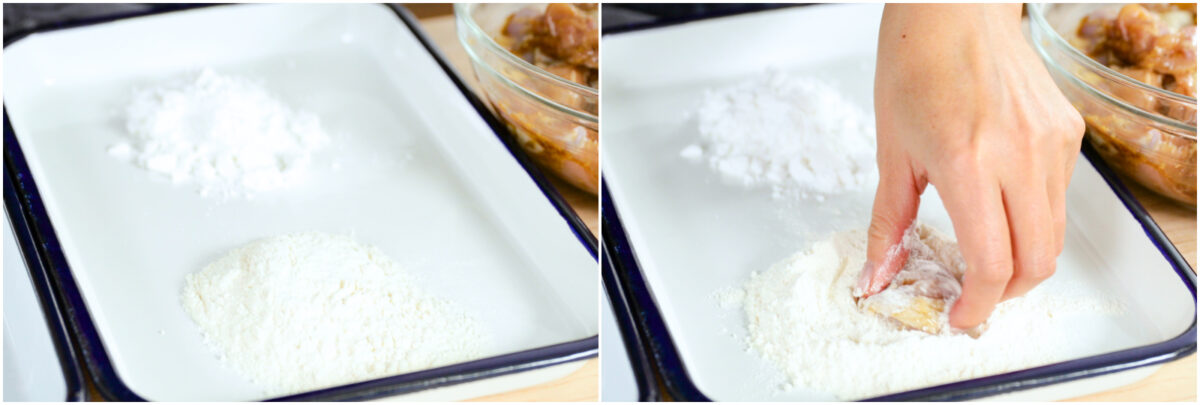
- Next, dredge it in the potato starch and shake off the excess. Place it in a separate tray. Continue with the remaining chicken pieces.
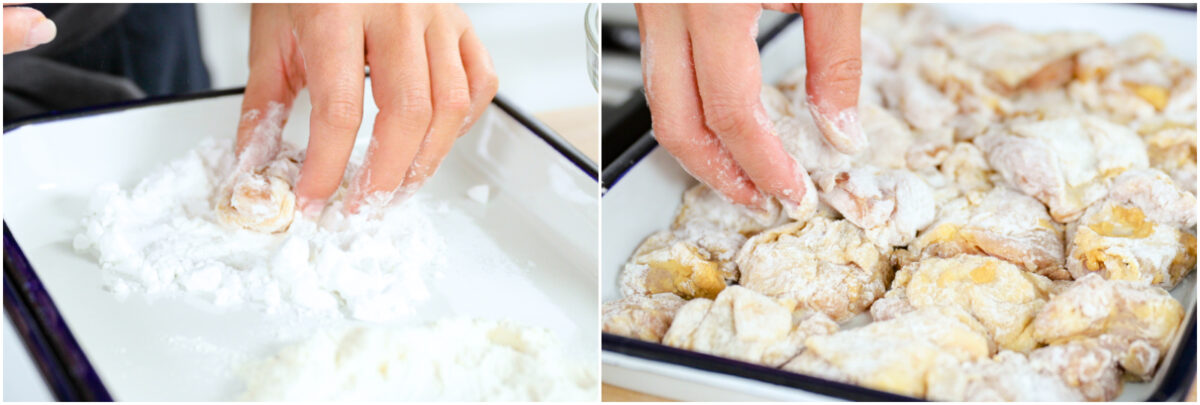
To Cook: The First Fry
- Check that the oil temperature has reached 325ºF (160ºC). Tip: If you don‘t have an instant read thermometer, insert a wooden chopstick into the oil; you‘ll know it‘s hot enough if small bubbles start to appear around the tip. For more helpful tips, see my post How to Deep-Fry Food.When it's ready, gently add 3 to 5 chicken pieces at a time to the hot oil. Do not overcrowd the pot. Tip: If you add too many pieces at once, the oil temperature will drop quickly, and the chicken will absorb too much oil.
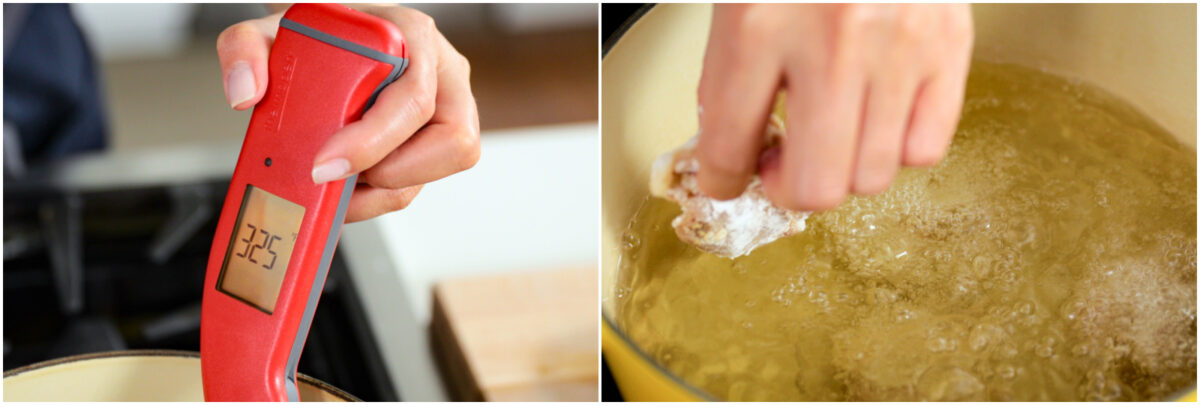
- Deep-fry for 90 seconds, or until the chicken is a light golden color. Transfer to a wire rack to drain the excess oil. Tip: If the chicken browns too quickly, then the oil temperature is too high. Either put a few more pieces of chicken in the oil or lower the heat setting. Controlling the oil temperature at all times is very important for deep-frying.
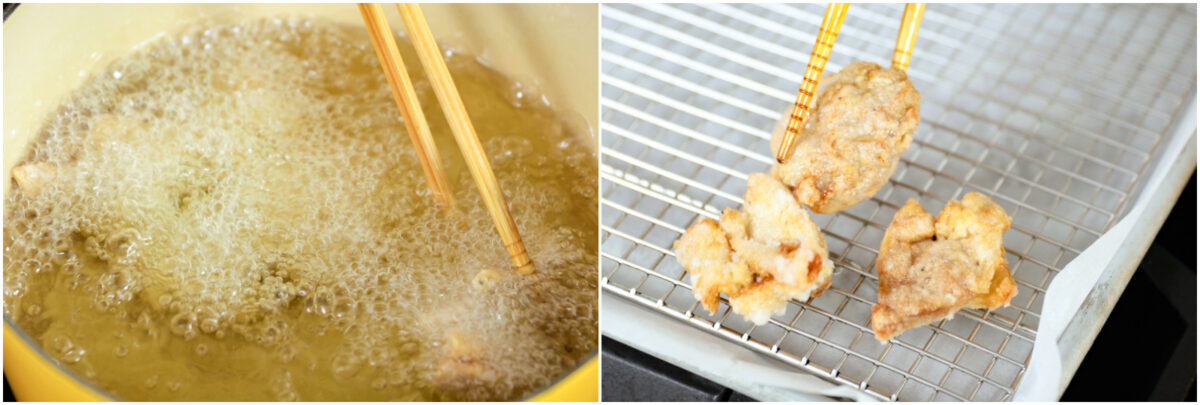
- The residual heat will continue to cook the chicken as it rests. Continue to fry the remaining chicken pieces. Between batches, scoop up and discard the crumbs in the oil with a fine-mesh sieve. This keeps the oil clean and prevents it from becoming darker.
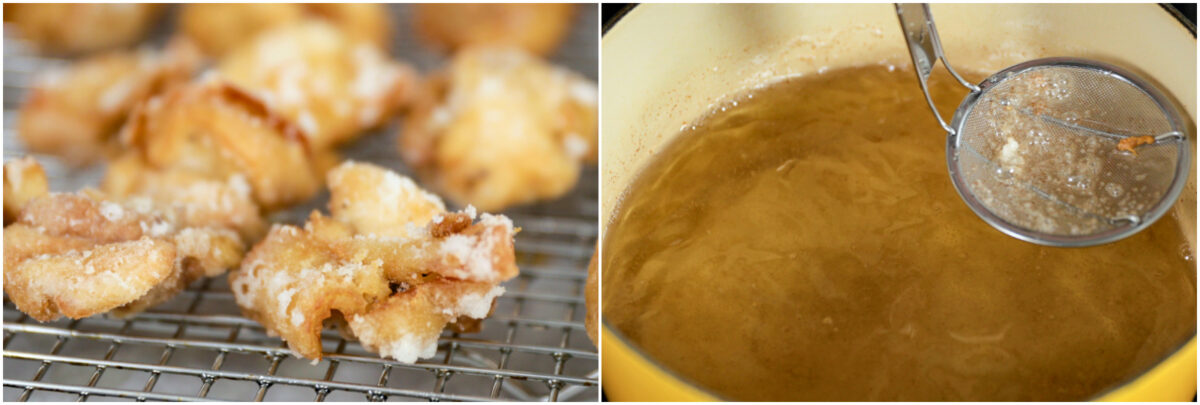
The Second Fry
- Now, raise the oil temperature to 350ºF (180ºC). Place the first 3 to 5 pieces of rested chicken back into the oil and deep-fry for 45 seconds, or until the skin is golden brown and crispy. Transfer them to the wire rack to drain the excess oil. Continue frying the remaining chicken pieces.
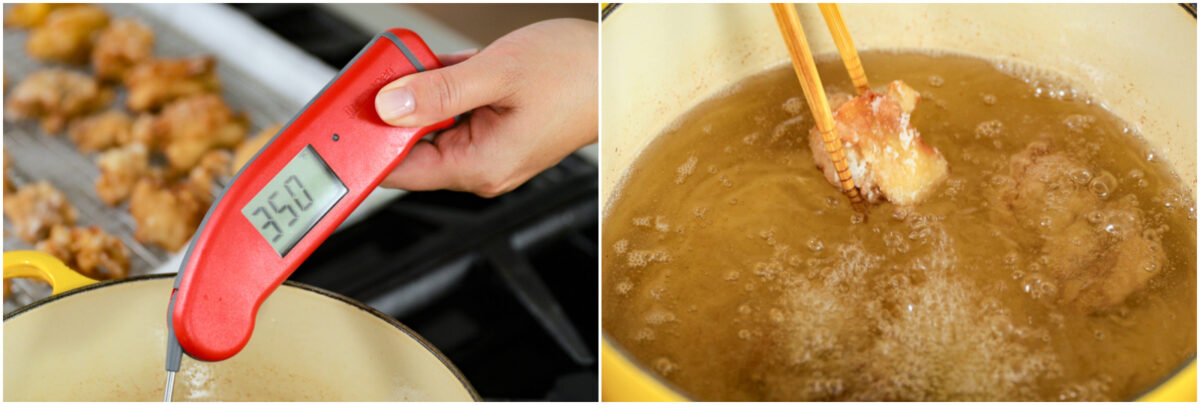
- The left photo shows the chicken pieces after the first fry and the right photo shows them after the second fry. The chicken pieces on the right are slightly darker in color.
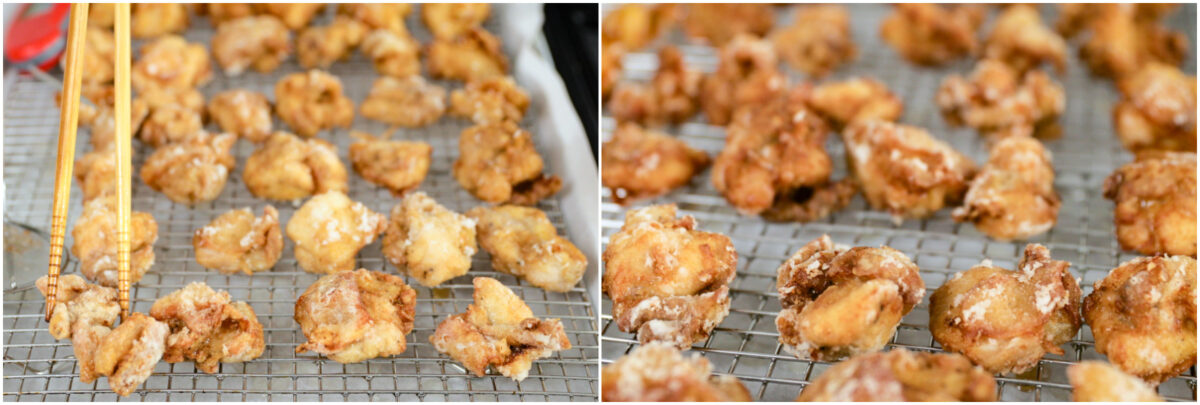
To Serve
- Serve the chicken hot with lemon wedges and a dipping plate of Japanese Kewpie mayonnaise. You can also sprinkle shichimi togarashi (Japanese seven spice) on the mayo for a bit of spice, if desired.
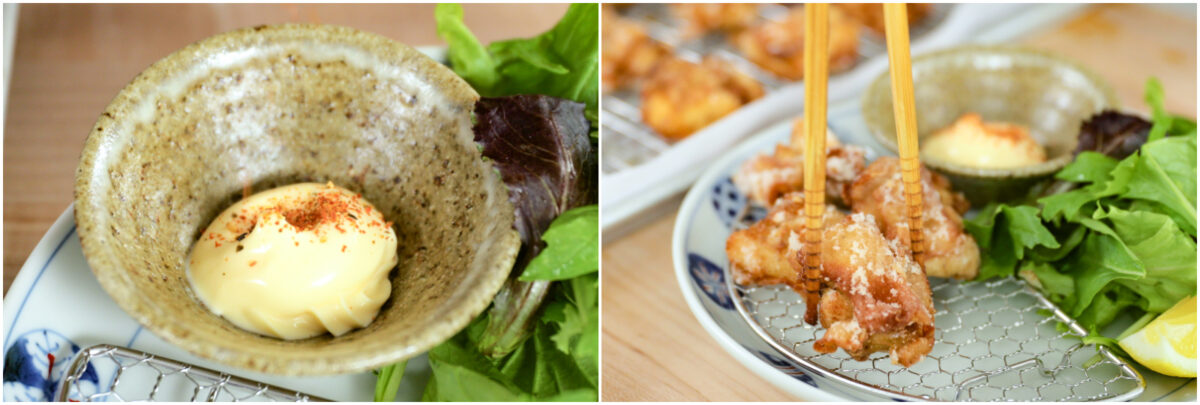
To Store
- Let it cool completely and transfer to an airtight container. You can store it in the refrigerator for up to 3 days and in the freezer for up to a month.
Nutrition
Did you make this recipe?
Tag @justonecookbook on Instagram so we can see your delicious creation!
Editor’s Note: This post was originally published on October 10, 2012, and updated with new images and a video on October 3, 2019. It was republished on April 25, 2025, with additional tips and helpful information.




